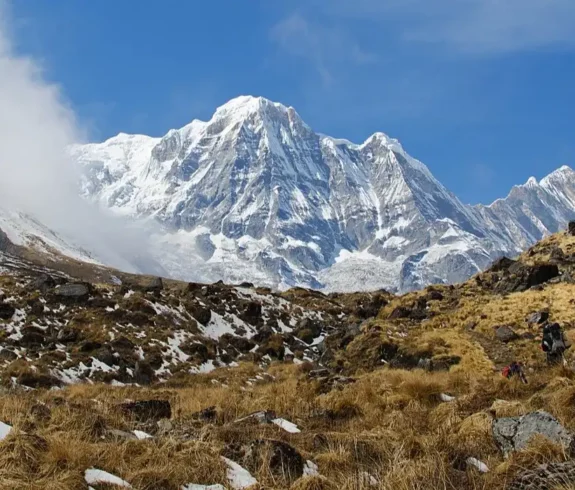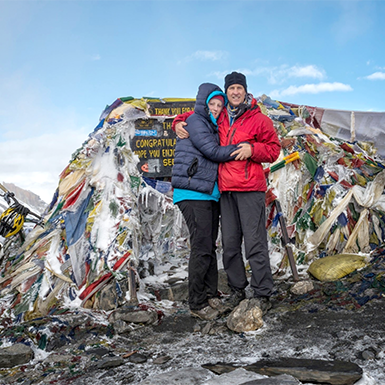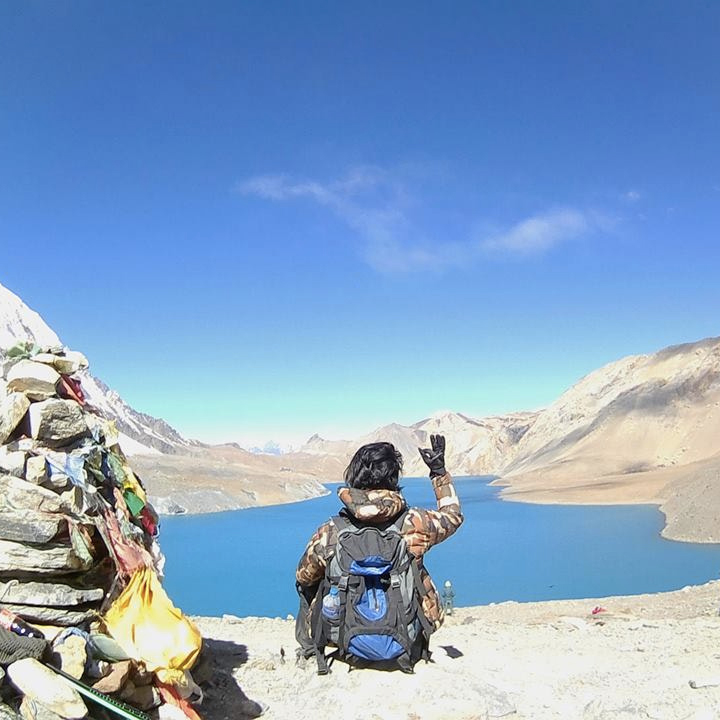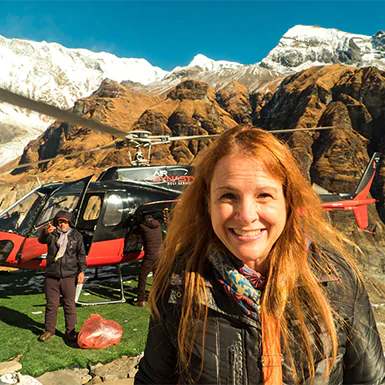One of Nepal’s biggest and most significant protected areas is the Annapurna Conservation Area (ACA). As the largest conservation area in the country, it covers more than 7,629 square kilometers. Preserving the central Himalayas, ACA has dramatically benefited biodiversity since 1986. This area is home to diverse flora, fauna, and ethnic groups that have coexisted peacefully with nature for centuries.

The Annapurna Conservation Area holds significance far beyond its stunning natural landscapes. It serves as a critical ecological zone, supporting ecosystems that range from subtropical forests to alpine meadows. This variety has turned ACA into a global center for biodiversity, drawing researchers, conservationists, and nature lovers worldwide. Additionally, ACA is a premier destination for trekking, offering iconic trails that allow visitors to experience the Himalayas’ natural beauty and cultural richness.
Location and Size of Annapurna Conservation Area
- The Central Himalayas house the Annapurna Conservation Area. A region celebrated for its breathtaking mountain ranges and abundant biodiversity.
- Extensive Coverage: ACA covers more than 7,629 square kilometers, making it the largest conservation area in Nepal. It extends across several districts, including Manang, Mustang, Kaski, Myagdi, and Lamjung.
- Diverse Altitude: The area spans an impressive altitude range, from 790 meters above sea level to over 8,000 meters. This range creates a variety of ecosystems within the conservation area.
- Variety of Ecosystems: ACA features a mix of landscapes, including subtropical forests, alpine meadows, and high-altitude deserts, making it one of the most ecologically diverse regions in the Himalayas.
- Renowned Trekking Routes: The trekking routes, such as the Annapurna Circuit and Annapurna Base Camp, draw thousands of trekkers annually.
- Cultural Diversity: The area is home to various ethnic groups, including the Gurung, Magar, Thakali, and Manangi communities. These groups have maintained their cultural traditions and ways of life for centuries, adding to the region’s rich cultural tapestry.
Geographical and Ecological Diversity of Annapurna Conservation Area
The Annapurna Conservation Area showcases stunning geographical and ecological diversity. This expansive region hosts many landscapes, including towering mountains, lush forests, flowing rivers, and deep valleys. These diverse environments make the area rich in both biodiversity and natural beauty.
Varied Landscapes in Annapurna Conservation Area
- High Mountains: Some of the world’s highest peaks, including Annapurna I at 8,091 meters, dominate ACA. These towering mountains offer breathtaking views and shape the region’s unique climate and ecosystem.
- Dense Forests: Dense forests cover ACA, with their composition changing as the altitude increases. Subtropical forests filled with rhododendrons, oaks, and bamboo flourish at lower altitudes. As you climb higher, these forests transition into temperate zones and eventually give way to alpine meadows, which thrive in the harsher conditions of higher elevations.
- Flowing Rivers: Many rivers and streams flow, fed by glaciers and snowfields from the great heights of the mountains. These rivers provide sustenance for the area’s rich biodiversity and are essential to local communities, serving as water sources for drinking and agricultural needs.
- Scenic Valleys: The deep valleys within this Conservation Area add to its scenic diversity. Valleys like Kali Gandaki and Marsyangdi are often dotted with terraced fields and traditional villages, creating a picturesque contrast to the rugged surrounding landscapes.
Altitude Range and Biodiversity
The Annapurna Conservation Area features an impressive altitude range, starting at 790 meters and rising to over 8,000 meters at its highest points. This significant elevation change creates a variety of microclimates and habitats, each supporting different species of plants and animals.
- Low Altitude Zones: At lower altitudes, subtropical forests thrive, providing habitats for wildlife, including numerous bird species and small mammals. The lush vegetation in these zones offers abundant resources for flora and fauna.
- Mid-Altitude Zones: As you ascend, the landscape transitions into temperate forests, where a mix of deciduous and coniferous trees grows. This zone supports a rich diversity of life, including species like the elusive red panda and various types of deer.
- High Altitude Zones: Higher altitudes above 3,000 meters are marked by alpine meadows and rocky, barren landscapes. Despite the harsh conditions, this zone supports a range of hardy plants and animals, including the snow leopard, Himalayan Thar, and various cold-adapted plants.
Flora and Fauna of Annapurna Conservation Area
The Annapurna Conservation Area (ACA) is a treasure trove of biodiversity, home to a wide array of plant and animal species. This region’s diverse ecosystems support a rich variety of flora and fauna, making it a vital area for conservation efforts. Visitors and nature enthusiasts will find this Conservation Area a remarkable place to explore, offering stunning opportunities to witness its natural beauty.
Diverse Flora in Annapurna Conservation Area
Thanks to its varied altitude and climate zones, the Annapurna Conservation Area boasts an impressive range of plant species. The region is particularly famous for its rich flora, which includes a wide variety of rhododendrons, orchids, and medicinal plants.
- Rhododendrons: ACA is home to numerous species of rhododendrons, with vibrant blooms that paint the landscape in hues of red, pink, and white during the flowering season. These beautiful flowers are a significant attraction for trekkers, especially in spring.
- Orchids: The conservation area also supports a diverse range of rare orchid species found only in specific regional microclimates. These orchids add to the area’s floral diversity and are a vital highlight for botanists and nature lovers.
- Medicinal Plants: This Conservation Area is rich in medicinal plants, many of which have been used for centuries by local communities for traditional healing practices. These plants are vital for local healthcare and contribute to the region’s biodiversity.
Fauna in Annapurna Conservation Area
The Annapurna Conservation Area is equally renowned for its diverse fauna. The area is a critical habitat for many species, including several endangered or rare. The Annapurna Conservation Area animals are particularly relevant here, as the region supports a wide range of wildlife, making it a haven for animal lovers and photographers.
- Snow Leopard: The snow leopard is among ACA’s most elusive and endangered species. This magnificent predator roams the high-altitude areas, making it a prized sighting for those lucky to spot it.
- Red Panda: The red panda, another endangered species, lives in the temperate forests of ACA. This shy and solitary animal is known for its distinctive reddish-brown fur, symbolizing the region’s conservation efforts.
- Himalayan Thar: The Himalayan Thar is a large ungulate native to the Himalayas mountains. These animals, well-adapted to the rocky terrain, often graze on the steep slopes within the conservation area.
- Birdlife: With over 450 species of birds, this Conservation Area is a birdwatcher’s paradise. The area hosts a variety of resident and migratory birds, including several species of pheasants, eagles, and vultures. The birdlife here contributes to the region’s rich biodiversity and offers fantastic opportunities for wildlife photography.
Cultural Significance of Annapurna Conservation Area
The Annapurna Conservation Area is a stunning blend of natural beauty and cultural diversity. This area is home to various ethnic groups, each preserving its unique traditions, practices, and lifestyles. This cultural richness enhances the significance of ACA, allowing visitors to experience Nepal’s natural and cultural heritage.
Cultural Diversity in Annapurna Conservation Area
- Gurung Community: The Gurung people, one of the most prominent ethnic groups in this Conservation Area, are known for their bravery, particularly in the Gurkha regiments. The Gurung community preserves its cultural identity through traditional dances, music, and festivals. In villages like Ghandruk, visitors often experience the warm hospitality of the Gurung people and witness their traditional culture firsthand.
- Magar Community: The Magar people, another significant ethnic group in ACA, are celebrated for their rich traditions and vibrant cultural expressions. The traditional dances of the Magar community, such as Sorathi and Kaura, are vital aspects of their cultural identity. The Magar people also maintain strong ties to their ancestral customs, which is evident in their daily lives and community gatherings.
- Thakali Community: The Thakali people, primarily residing in the Kali Gandaki Valley, are known for their business acumen and culinary traditions. For centuries, the Thakali community has played a crucial role in the region’s trade and commerce. Their traditional Thakali cuisine, including dishes like dal bhat and dhido, is a visitor’s highlight. The Thakali people also carefully preserve their cultural practices and religious rituals.
- Manangi Community: The Manangi people, native to the remote Manang Valley, are known for their resilience in adapting to the harsh mountain environment. The Manangi community is deeply connected to Tibetan Buddhism, reflected in their monasteries, festivals, and rituals. Visitors to the Manang region can witness the unique blend of Tibetan and Nepalese cultures that define the Manangi way of life.
Cultural Practices, Festivals, and Traditional Lifestyles
The Annapurna Conservation Area is a museum of cultural practices, festivals, and traditional lifestyles preserved for generations. The ethnic communities in ACA continue to celebrate their heritage through various cultural activities that offer a glimpse into their way of life.
- Traditional Festivals: Festivals in ACA are vibrant displays of cultural identity and religious devotion. Dashain and Tihar are widely celebrated across the region, bringing communities together for prayers, feasts, and traditional dances. The Tiji Festival in the Mustang region is another significant event, featuring elaborate rituals and masked dances that tell stories of good triumphing over evil.
- Religious Practices: The people’s spiritual beliefs deeply influence ACA’s cultural landscape. Tibetan Buddhism plays a central role in the lives of the Manangi and Thakali communities, while Hinduism is prevalent among the Gurung and Magar populations. Visitors can explore ancient monasteries, chortens, and prayer flags that dot the landscape, each serving as a testament to the region’s rich spiritual heritage.
- Traditional Lifestyles: The ethnic communities in this Conservation Area can live by following the traditions they have always observed over centuries, in which they rely on land and the environment. The majority of people have depended on agriculture, animal husbandry, and trade for a living for many years. Although some modern influences exist, their style of living has been maintained and reflected in their structures, dresses, and day-to-day life.
Trekking and Tourism in Annapurna Conservation Area
The Annapurna Conservation Area offers some of the most scenic and popular trekking routes in the Himalayas, making it a top destination for trekking enthusiasts. With its diverse landscapes, rich cultural heritage, and breathtaking views, ACA draws thousands of trekkers annually. However, as these routes gain popularity, the importance of sustainable tourism practices becomes increasingly evident in preserving the region’s natural beauty and cultural integrity.
Popular Trekking Routes
- Annapurna Circuit: The Annapurna Circuit ranks as one of the world’s most iconic trekking routes. This trek circles the entire Annapurna massif, providing breathtaking views of peaks like Annapurna I, Dhaulagiri, and Machapuchare.
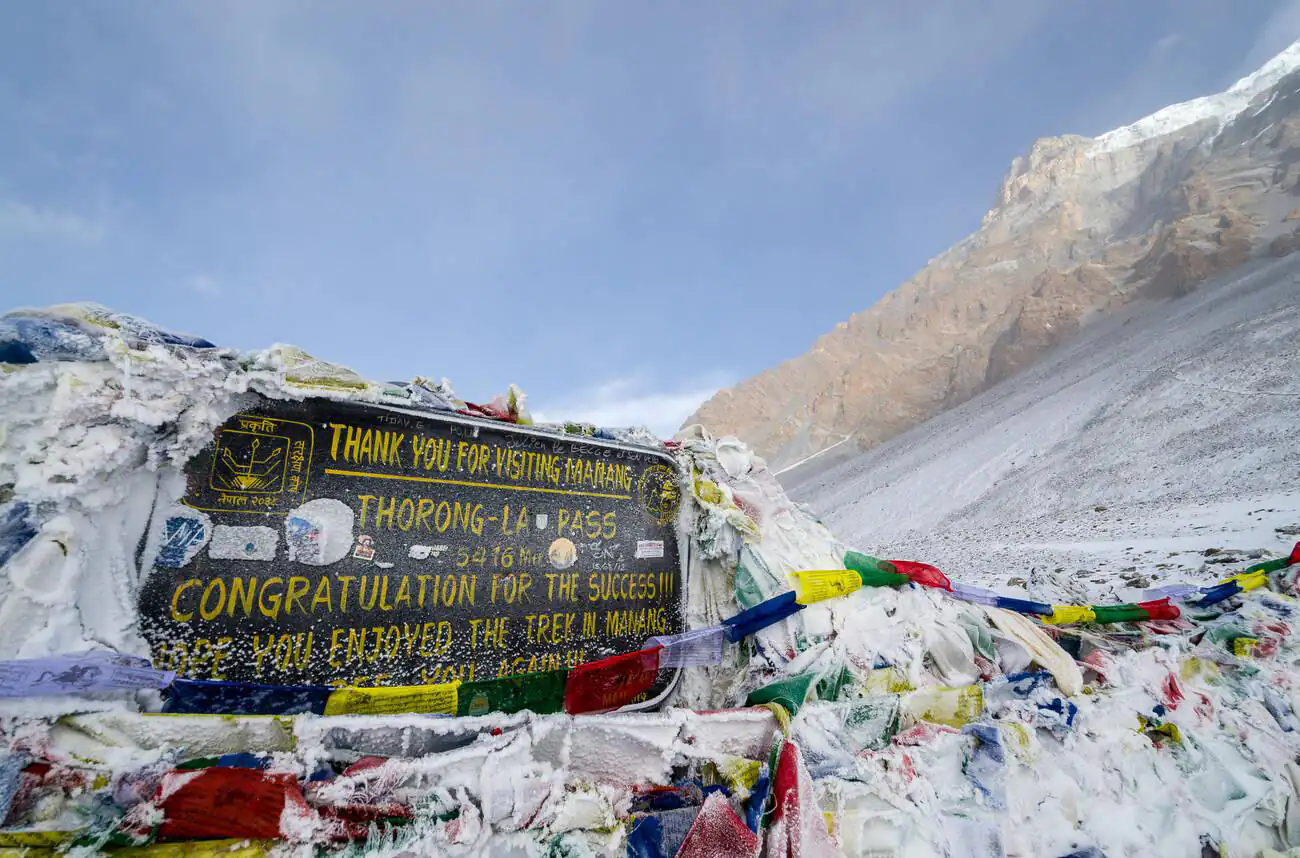
The trail takes trekkers through diverse landscapes, including subtropical forests, alpine meadows, and high-altitude deserts. Along the way, trekkers can experience the unique cultures of the Gurung, Magar, and Thakali communities.
- Annapurna Base Camp Trek: Though shorter, Annapurna Base Camp (ABC) Trek offers an equally rewarding experience. This trek leads directly to the base of Annapurna I, offering stunning views of the Annapurna range and Machapuchare.

The trail winds through rhododendron forests, terraced fields, and traditional villages, providing a glimpse into the local communities’ rich biodiversity and daily lives.
- Ghorepani Poon Hill Trek: The Ghorepani Poon Hill Trek stands out as one of the most popular short treks within the Annapurna Conservation Area. A trek that suits people with little time available, this is an opportunity to see the beauty in the Himalayas.

An ideal destination for watching sun rises on Annapurna and Dhaulagiri ranges is called Poon Hill. It also goes past loving Gurung towns and discussing lush woods and terrace farming lands.
Importance of Sustainable Tourism
As trekking grows more popular in this Conservation Area, the need for sustainable tourism practices becomes critical. The effects of trekking on the local environment and economy are significant, making responsible management essential.
- Environmental Impact: In ACA, trekking has far-reaching ecological consequences. As more visitors visit remote areas, deforestation, soil erosion, and waste accumulation may occur. Therefore, trekkers and tour operators should embrace green habits, such as carrying their water in reusable bottles, avoiding single-use plastics, and following recognized treks.
- Cultural Impact: The rise in tourism may likewise impact the area’s cultural heritage. Respect for local customs and traditions, support of local businesses, and involvement with communities that preserve their cultural identity are essential.
- Economic Impact: Tourism is vital in providing income for the local communities in ACA. However, ensuring this income is fairly distributed and benefits the wider community rather than just a few is essential. Supporting locally owned businesses, hiring local guides, and staying in locally run lodges can help achieve this goal.

Conservation Efforts in Annapurna Conservation Area
The Annapurna Conservation Area is a hub for trekking and tourism and a crucial site for biodiversity conservation. The Annapurna Conservation Area Project (ACAP) leads conservation efforts in this region, implementing various initiatives and strategies to protect the area’s natural resources and cultural heritage. These efforts are essential to maintaining the ecological balance and ensuring the region’s long-term sustainability.
Conservation Initiatives by Annapurna Conservation Area Project (ACAP)
- Community-Based Conservation: ACAP follows a community-based approach to conservation. This approach includes local communities in decision-making processes, ensuring that conservation efforts are in harmony with the needs and traditions of the people living in this Conservation Area. By empowering local communities, ACAP promotes the sustainable use of natural resources and fosters a sense of ownership among the residents.
- Biodiversity Protection: ACAP has implemented various programs to protect the region’s rich biodiversity. These include habitat restoration projects, anti-poaching initiatives, and endangered species monitoring. The focus on safeguarding this Conservation Area animals like the snow leopard, red panda, and Himalayan Thar is central to these efforts. ACAP also works to conserve the diverse plant species, including medicinal plants and the iconic rhododendrons.
- Environmental Education: The part of ACAP’s conservation strategy that involves educating people is vital. In efforts to conserve, ACAP runs environmental education projects in local schools and communities to create awareness of the need for conservation. These initiatives nurture a sense of ecological responsibility amongst young people while promoting constant use habits that are mindful of future generations’ health.
- Tourism Management: ACAP regulates tourism activities within this Conservation Area to minimize environmental impact. Managing trekking routes, promoting eco-friendly practices, and ensuring tourism benefits local communities are all crucial aspects of this approach. Requiring an Annapurna Conservation Area Permit for all trekkers helps control the number of visitors and generates funds for conservation projects.
Challenges in Conservation
Despite the success of ACAP’s initiatives, several challenges remain in conserving the Annapurna Conservation Area. Tackling these challenges is essential for the ongoing protection of this unique region.
- Deforestation: Deforestation is one of the significant threats to the ACA. The demand for firewood and timber, coupled with agricultural expansion, has led to the degradation of forests in some areas. ACAP is working to combat deforestation through reforestation projects and promoting alternative energy sources, such as solar power and biogas.
- Wildlife Protection: Protecting wildlife in the Annapurna Conservation Area is a significant challenge. Poaching and human-wildlife conflicts threaten species like the snow leopard and red panda. ACAP collaborates with local communities to monitor wildlife populations, enforce anti-poaching laws, and implement measures to reduce conflicts between humans and animals.
- Role of Local Communities: Local community involvement is vital to the success of conservation efforts. While ACAP has made significant progress in engaging these communities, ongoing efforts are needed to ensure their continued participation. Challenges include balancing conservation needs with the local population’s economic needs and addressing modernization’s impacts on traditional practices.
Annapurna Conservation Area Permit: Essential Information for Trekkers
Anyone intending to hike in the Annapurna Conservation Area must obtain an Annapurna Conservation Area Permit. This document is essential because it allows people to trek in one of the well-known trekking regions in Nepal and promotes conservation and local development. The following paragraphs provide detailed information about how to get the permit, how much it costs, and why it is essential for anyone going on a trek through the Annapurna region.
Requirements for Obtaining an Annapurna Conservation Area Permit
Before starting your trek in this Conservation Area, you must secure an Annapurna Conservation Area Permit. Every trekker must have this permit, whether independently or with a guided group.
- Documents Required: To get the permit, you’ll need a valid passport and passport-sized pictures. Your passport must also be valid for the duration of your stay in Nepal.
- Where to Obtain the Permit: You can get the Annapurna Conservation Area Permit from the Nepal Tourism Board (NTB) offices in Kathmandu and Pokhara. These offices are the official sources for acquiring the permit. Some trekking agencies may also assist you in obtaining the license as part of their services.
- Application Process: The application process is simple. Visit the NTB office or a registered trekking agency, complete the permit application form, submit your passport photos, and pay the required fee. They usually issue the permit on the same day.
Cost of the Annapurna Conservation Area Permit
The cost of the Annapurna Conservation Area Permit depends on your nationality and the season you are trekking. Here are the current fees:
- Foreign Nationals: The permit fee is usually around NPR 3,000 (approximately USD 25 to 30) per person.
- SAARC Nationals: Trekkers from SAARC countries (South Asian Association for Regional Cooperation) typically pay a reduced fee of around NPR 1,000 (approximately USD 10).
Importance of the Annapurna Conservation Area Permit
The Annapurna Conservation Area Permit serves several essential purposes beyond just granting access to trekking routes:
- Support for Conservation Efforts: The permit fees directly support conservation projects within the Annapurna Conservation Area. This funding supports habitat restoration, wildlife protection, and maintenance of trekking trails.
- Contribution to Local Communities: A portion of the permit fee supports the local communities living within the ACA. This funding helps with community development projects, such as building schools and healthcare facilities and promoting sustainable tourism practices.
- Regulation of Trekking Activities: The permit system helps regulate the number of trekkers in the region, minimizing the environmental impact on trails and surrounding ecosystems. It also ensures that trekkers know the rules and guidelines for responsible trekking in the area.
Practical Tips for Trekkers
- Always Carry Your Permit: Keep your Annapurna Conservation Area Permit while trekking. You may need to show it at various checkpoints along the trails.
- Respect Local Customs: With the permit comes the responsibility to respect local customs and the natural environment. Practice eco-friendly habits, such as packing out all trash, staying on designated trails, and supporting local businesses.
- Check Permit Validity: Ensure your permit is valid for the entire duration of your trek. If you plan to extend your trek, confirm whether additional permits or extensions are necessary.
Exploring and Capturing Annapurna Conservation Area: A Photographer’s Paradise
The Annapurna Conservation Area is a haven for photographers and nature enthusiasts. With its vast landscapes, diverse wildlife, and rich cultural tapestry, this region offers countless opportunities to capture striking images. Photographs from the Annapurna Conservation Area often showcase its towering peaks, lush forests, traditional villages, and unique wildlife, drawing photographers from around the globe.
Capturing the Beauty of Annapurna Conservation Area
Diverse Landscapes: The ACA’s landscape is remarkably varied, featuring the towering Annapurna range, lush valleys, and terraced fields. Photographers find that the golden hours of sunrise and sunset bathe the mountains and valleys in a warm, dramatic light, creating stark and beautiful contrasts perfect for photography.
- Wildlife Encounters: Home to many animals, including the endangered snow leopard, red panda, and Himalayan Thar, ACA is a fantastic place for wildlife photography. The key to capturing these elusive creatures lies in patience. The early mornings and late afternoons are prime times for sightings. A telephoto lens allows photographers to take detailed images from a distance, ensuring that the wildlife remains undisturbed.
- Cultural Insights: Beyond its natural allure, ACA boasts a deep cultural heritage. Photographers can delve into the essence of local life by visiting the traditional villages of the Gurung, Magar, Thakali, and Manangi people. The colorful festivals, intricate architecture, and daily activities offer rich scenes documenting the area’s cultural diversity.
Photography Tips for the Annapurna Conservation Area
- Essential Gear: Acquiring a set of multiple lenses is necessary. For example, a wide-angle lens works beautifully in landscape photography, paralleled by a telephoto when shooting animals. It would be best to have a strong tripod for situations with limited light and take long-exposure pictures that require sharpness, like photographs of stars or moving waters.
- Cultural Sensitivity: Always seek permission before photographing people and cultural sites. Respecting local customs and traditions helps build positive relationships with the communities.
- Equipment Protection: Given the unpredictable weather in ACA, it’s vital to protect your camera gear. Bring along rain covers and silica gel packs to combat moisture.
- Patience and Awareness: Often, the best photographs result from observing and waiting. Move slowly, stay alert, and be patient to capture candid moments and wildlife in their natural settings.
Visitor Information for Annapurna Conservation Area
Proper planning is essential when visiting the Annapurna Conservation Area. Here’s what you need to know to make the most of your adventure.
Optimal Visiting Times
- Spring (March to May): Spring is one of the best times to visit ACA. The weather is mild, the skies are clear, and the rhododendron forests are in full bloom, adding vibrant colors to the landscape.
- Autumn (September to November): Autumn is another ideal time for trekking in ACA. The post-monsoon season offers clear skies, moderate temperatures, and excellent visibility, making it perfect for photography and trekking.
Traveling to Annapurna Conservation Area
- Starting from Kathmandu: Most trips to ACA begin in Kathmandu, where you can take a flight or a bus to Pokhara, the gateway to the region.
- From Pokhara: Depending on your chosen trek, you can drive or take a local bus to various trek start points, such as Nayapul, Besisahar, or Jomsom.
Accommodations
- Teahouses: Along the trekking routes, teahouses provide basic yet comfortable lodging, offering a place to rest and recharge.
- Hotels and Lodges: More comfortable accommodations are available in larger towns like Pokhara and Jomsom, featuring hot showers and Wi-Fi amenities.
Guidelines for Visitors
- Permit Requirements: Before you begin, ensure you have an Annapurna Conservation Area Permit. This permit is essential for entry and helps fund local conservation efforts.
- Environmental Responsibility: Welcome to a new way of living that will benefit you and the entire planet. One such principle is packing out all trash, avoiding using single-use plastics, and always staying on trails.
- Cultural Respect: Be considerate of local customs and traditions. Dress modestly in villages and religious sites, and always ask permission before photographing people.
- Safety Measures: The high altitudes and varying weather conditions can be challenging. Properly acclimatize, stay hydrated, and be mindful of altitude sickness symptoms. Always inform someone of your trekking itinerary and expected return.
Conclusion: Preserving the Annapurna Conservation Area
The Annapurna Conservation Area (ACA) is a remarkable center of biodiversity, cultural richness, and adventure. This region’s diverse landscapes, ranging from snow-capped peaks to lush valleys, offer a unique blend of natural beauty and cultural heritage that draws visitors worldwide. Annapurna Conservation Area photos showcase its stunning scenery, while the presence of rare and endangered Annapurna Conservation Area animals highlights the critical need for conservation.
The Annapurna Conservation Area Permit is vital in maintaining the region’s ecological balance and supporting local communities. Revenue from these permits directly funds conservation projects and community development, ensuring that ACA remains a vibrant and sustainable destination for future generations.
When exploring the Annapurna Conservation Area, it is crucial to engage in responsible tourism. Respect local cultures, minimize environmental impact, and support sustainable practices to help preserve this incredible region. By doing so, you actively contribute to ongoing efforts to protect ACA’s natural and cultural treasures, ensuring this unique area thrives for years.
